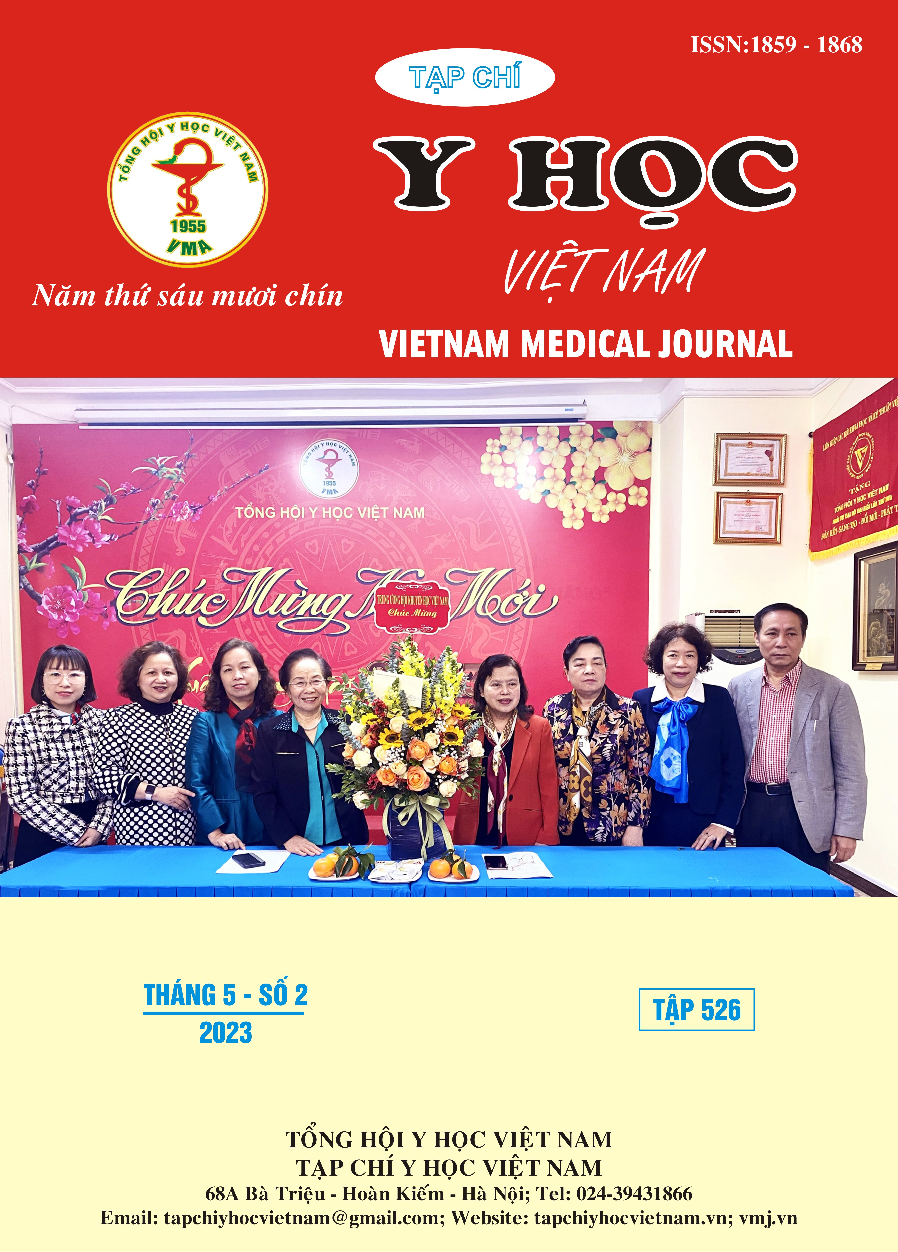ENDOVASCULAR TREATMENT FOR UPPER GASTROINTESTINAL HAEMORRHAGE IN VIET DUC HOSPITAL
Main Article Content
Abstract
Objective: This study to evaluate the safety and effectiveness of endovascular intervention in treating upper gastrointestinal bleeding. Patients and methods: Retrospective study on patients with high gastrointestinal bleeding undergoing endovascular intervention at Viet Duc University Hospital between October 2017 and October 2022. Results: 65 patients, including 44 men and 21 women, with an average age of 56.5 years. Causes of bleeding: 24 patients after biliary-pancreatic surgery, 25 cases of peptic ulcer bleeding, 5 patients due to pancreatitis, 5 patients after biliary stenting or biliary surgery, 2 patients after pancreatic trauma injury, 3 patients due to vascular malformation, 1 patient due to bleeding duodenal tumour. 36 patients (55.4%) were performed gastroduodenal endoscopy before the intervention, of which 30 patients detected lesions, but failed to control bleeding under endoscopy. 43 patients received blood transfusion (66.1%), and 11 patients (16.9%) had received vasopressors before intervention. Vascular injuries were detected in 49 patients (75.4%): 20 had active bleeding, 28 had aneurysm pseudoaneurysm, and 1 had an artery dissection. 12 cases using coils (18.5%), 19 patients using glue (29.2%), 33 patients combining coils and bio-glue (50.7%), 1 case was temporarily blocked with gelfoam (1.6%). There was no recurrent bleeding after 24 hours and 5 recurrent bleeding after 14 days (7.7%). 2 patients presented with liver failure after separate hepatic artery occlusion, including 1 case of irreversible liver failure. 2 patients died within 30 days (3.1%). Conclusion: Endovascular intervention is a safe and effective method for treating upper gastrointestinal bleeding, especially in patients who have failed to medical therapy/endoscopic intervention or who have vascular complications after intervention or surgery.
Article Details
Keywords
upper gastrointestinal bleeding, gastrointestinal hemorrhage, embolization
References
2. Barkun, A.N., et al., International consensus recommendations on the management of patients with nonvariceal upper gastrointestinal bleeding. Annals of internal medicine, 2010. 152(2): p. 101-113.
3. Mirsadraee, S., et al., Embolization for non-variceal upper gastrointestinal tract haemorrhage: a systematic review. Clinical radiology, 2011. 66 (6): p. 500-509.
4. Zhou, T.-Y., et al., Post-pancreaticoduodenectomy hemorrhage: DSA diagnosis and endovascular treatment. Oncotarget, 2017. 8(43): p. 73684.
5. Kim, J., et al., Endovascular intervention for management of pancreatitis-related bleeding: a retrospective analysis of thirty-seven patients at a single institution. Diagnostic and Interventional Radiology, 2015. 21(2): p. 140.
6. Lee, H.G., et al., Management of bleeding from pseudoaneurysms following pancreaticoduodenectomy. World Journal of Gastroenterology: WJG, 2010. 16(10): p. 1239.
7. Iswanto, S. and M.L. Nussbaum, Hepatic artery pseudoaneurysm after surgical treatment for pancreatic cancer: minimally invasive angiographic techniques as the preferred treatment. North American journal of medical sciences, 2014. 6(6): p. 287.
8. Jae, H.J., et al., Transcatheter arterial embolization of nonvariceal upper gastrointestinal bleeding with N-butyl cyanoacrylate. Korean journal of radiology, 2007. 8(1): p. 48-56.
9. Huang, Y.-S., et al., Transcatheter arterial embolization with N-butyl cyanoacrylate for nonvariceal upper gastrointestinal bleeding in hemodynamically unstable patients: results and predictors of clinical outcomes. Journal of Vascular and Interventional Radiology, 2014. 25(12): p. 1850-1857.


